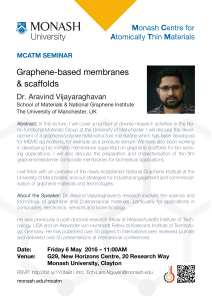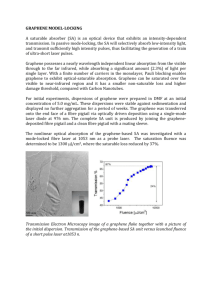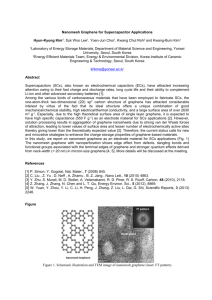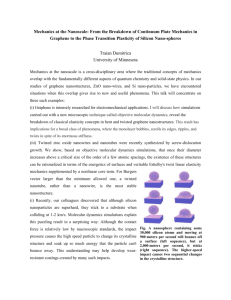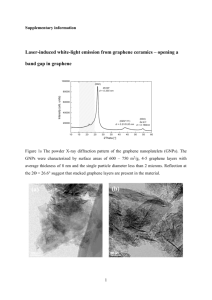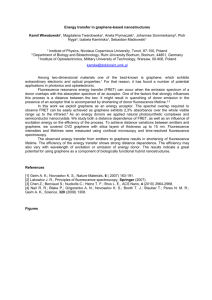13 Graphene-based Layered Nanostructures for Electronic and
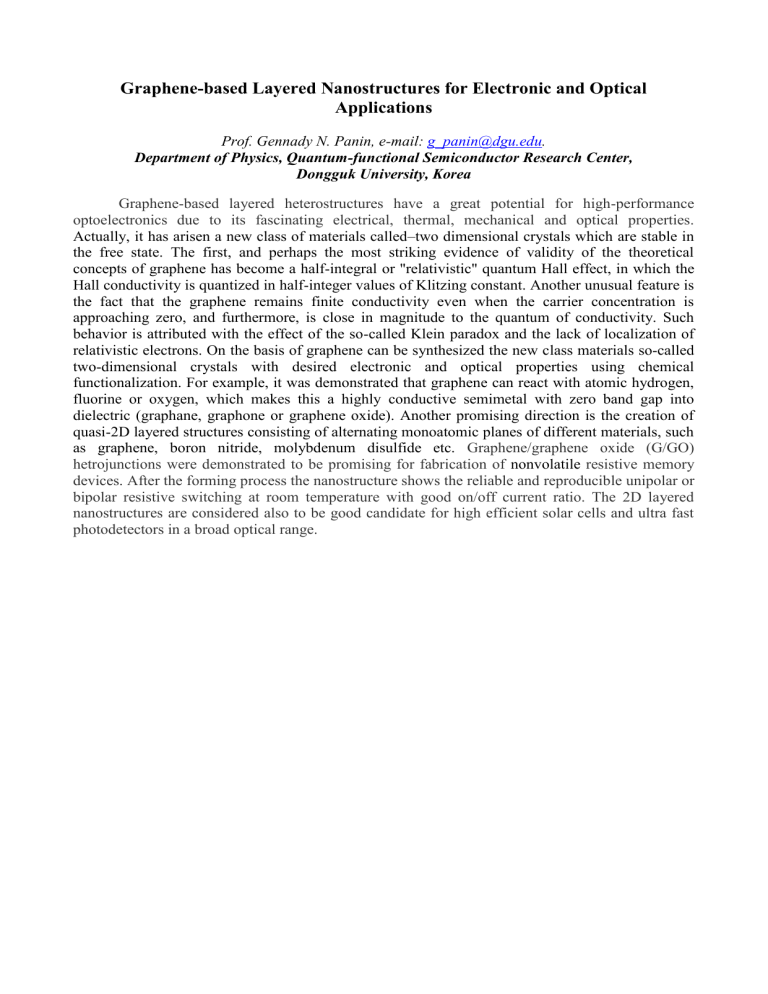
Graphene-based Layered Nanostructures for Electronic and Optical
Applications
Prof. Gennady N. Panin, e-mail: g_panin@dgu.edu
.
Department of Physics, Quantum-functional Semiconductor Research Center,
Dongguk University, Korea
Graphene-based layered heterostructures have a great potential for high-performance optoelectronics due to its fascinating electrical, thermal, mechanical and optical properties.
Actually, it has arisen a new class of materials called–two dimensional crystals which are stable in the free state. The first, and perhaps the most striking evidence of validity of the theoretical concepts of graphene has become a half-integral or "relativistic" quantum Hall effect, in which the
Hall conductivity is quantized in half-integer values of Klitzing constant. Another unusual feature is the fact that the graphene remains finite conductivity even when the carrier concentration is approaching zero, and furthermore, is close in magnitude to the quantum of conductivity. Such behavior is attributed with the effect of the so-called Klein paradox and the lack of localization of relativistic electrons. On the basis of graphene can be synthesized the new class materials so-called two-dimensional crystals with desired electronic and optical properties using chemical functionalization. For example, it was demonstrated that graphene can react with atomic hydrogen, fluorine or oxygen, which makes this a highly conductive semimetal with zero band gap into dielectric (graphane, graphone or graphene oxide). Another promising direction is the creation of quasi-2D layered structures consisting of alternating monoatomic planes of different materials, such as graphene, boron nitride, molybdenum disulfide etc. Graphene/graphene oxide (G/GO) hetrojunctions were demonstrated to be promising for fabrication of nonvolatile resistive memory devices. After the forming process the nanostructure shows the reliable and reproducible unipolar or bipolar resistive switching at room temperature with good on/off current ratio. The 2D layered nanostructures are considered also to be good candidate for high efficient solar cells and ultra fast photodetectors in a broad optical range.


